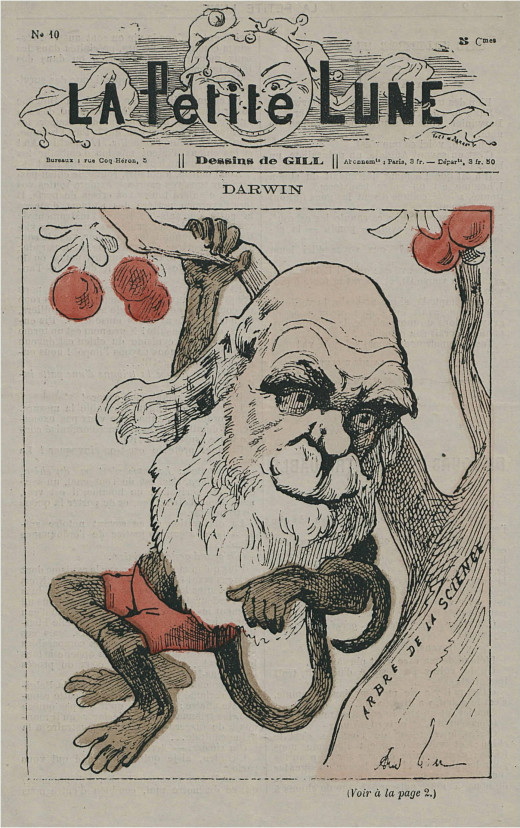How Evolution Works
The theory of Evolution
Evolution isn't one process, it's a combination of so many different factors. Depending on the situation and the environment, many factors affect the evolution of an organism. But what is Evolution? The Merriam-Webster dictionary says it's:
'A theory that the various types of animals and plants have their origin in other pre-existing types, and that the distinguishable differences are due to modifications in successive generations'
Charles Darwin

And NO, it's not just a theory
The applicable dictionary definition is:
A plausible or scientifically acceptable general principle or body of principles offered to explain phenomena
This is also the definition that fits the 'theory' of gravity — and those who have doubted this theory didn't for long.
And the other definition:
A hypothesis assumed for the sake of argument or investigation, an unproved assumption: conjecture
'If I feed my dog carrots every meal, he will turn orange!' Yes, it's a theory, but until we feed X-number of dogs X-number of carrots, we won't know.

So let's have a look at what is actually happening
The following factors have the potential to affect evolution:
Random genetic mutations
These occur in all species; some mutations are incompatible with life, and some have no noticeable effect. A random mutation might, however, result in enhanced colour perception in the deep blue spectrum — which could provide an advantage over predators. So importantly, if mutations aid survival, they are more likely to be passed on to another generation.
Natural selection
This is not chance occurrence, it occurs when a random genetic mutation benefits an organism in a way that helps it to survive. If the mutation can be passed to the next generation (if the cells involved are 'gametic') then natural selection has played a part in the evolution of that species.
Genetic Drift
Genetic Drift is a product of chance! If a random event (volcanic eruption or earthquake for example) wiped out half of a population of a species, it might feasibly destroy some genetic variations and not others. If the population that survived had, on average, shorter legs, then over time that species would have shorter legs than the original species!
Speciation
This is when a species evolves to the point where it can be classed as separate to the original. This doesn't always mean the original species no longer exists, however! If an animal population is split and one group survives in different environmental conditions — it may evolve differently. Over time, that group may be so different as to be classed as a separate species. Speciation has occurred!
Gene Flow
Gene Flow is in opposition to evolution, and describes how populations migrate, or have their genetic material spread between populations by other means (seeds in bird poo, for example). Because genetic material is being transferred, it inhibits the chances of genetic drift occurring.

You can still see... EVOLUTION IN ACTION
The poisonous Cane Toad was introduced to the expanses of Australia to combat a beetle that ate sugar cane. Unfortunately they spread at an alarming rate and are now classed as a highly invasive species. Since they were introduced into Australia in 1935, they have evolved longer and stronger legs to allow them to travel the larger Australian distances to find food!
Source: BBC news

Yep, even more... EVOLUTION IN ACTION
Snakes that eat the poisonous Cane Toad have evolved smaller mouths. This small change allows them to eat only the smaller, less poisonous cane toads that won't kill them! This is easily pictured by imagining how the larger mouthed snakes kept eating the larger, more poisonous toads. Over time, only the smaller mouthed variations were left alive. This is Evolution!
Source: University of Sydney

WOW, even more.... EVOLUTION IN ACTION
Tibetan women who possess a gene that allows their haemoglobin to carry more oxygen (and thus survive at altitude) are more likely to have children that survive on the Tibetan Plateau (13,000 metres). Because of this, these important survival genes are passed to more generations — that consequently have a greater chance of survival... and so-on and so-forth!
Source: Nature, international weekly journal of science

A Key Misconception...
Man is not descended from the ape.
An early common misconception, which caused Darwin much embarrassment, was that man was a direct descendant of the ape. Charles Darwin never claimed that this was the case: he suggested that both man and the ape descended from a common ancestor (so there, monkey boy).
One final thought... WHERE HAS EVOLUTION GONE?
Some plants/animals have not changed much through evolutionary processes; others have changed extensively. This could be because a particular species is not challenged by its environment and is able to survive and reproduce adequately...








